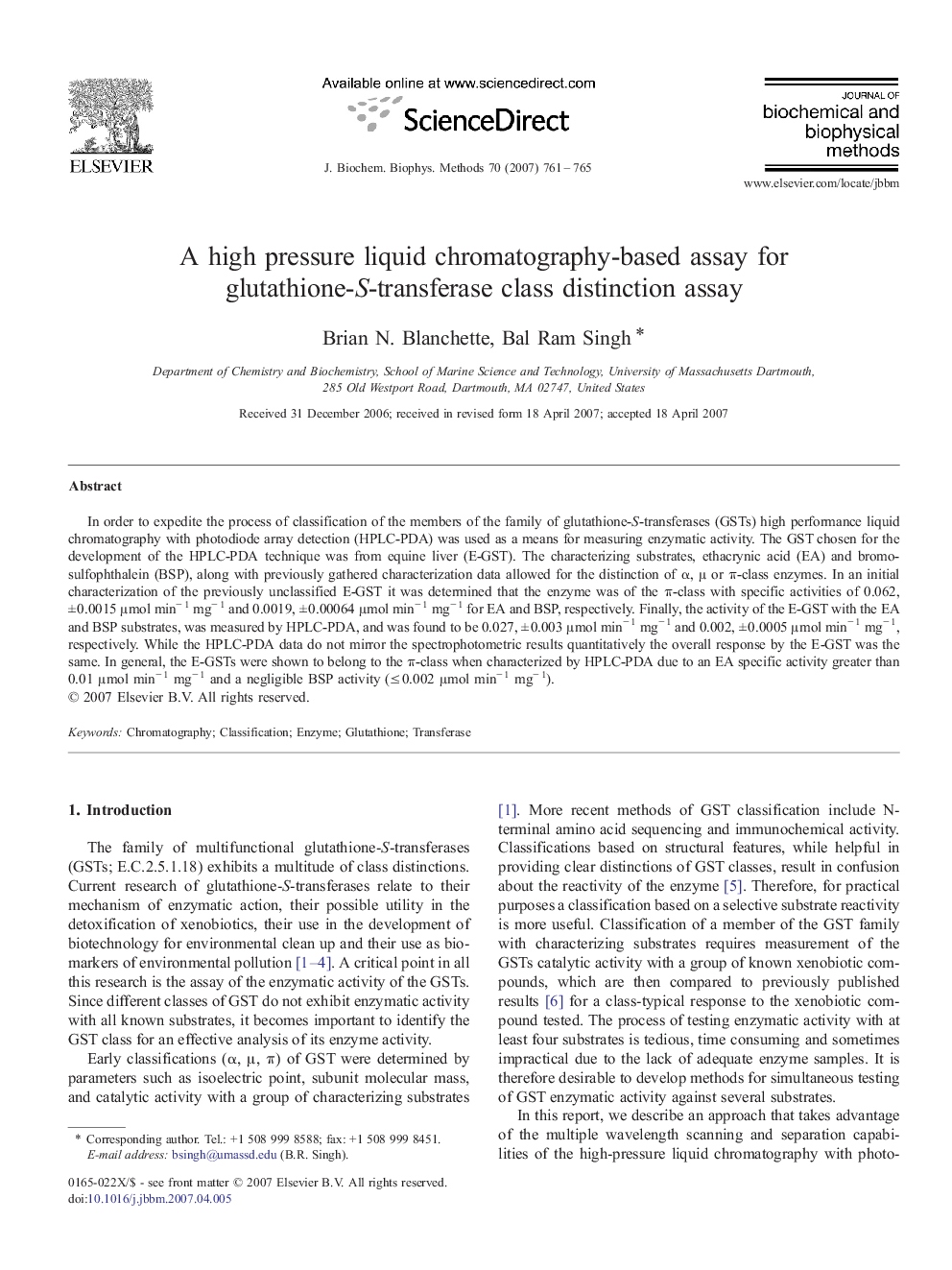| Article ID | Journal | Published Year | Pages | File Type |
|---|---|---|---|---|
| 1988443 | Journal of Biochemical and Biophysical Methods | 2007 | 5 Pages |
In order to expedite the process of classification of the members of the family of glutathione-S-transferases (GSTs) high performance liquid chromatography with photodiode array detection (HPLC-PDA) was used as a means for measuring enzymatic activity. The GST chosen for the development of the HPLC-PDA technique was from equine liver (E-GST). The characterizing substrates, ethacrynic acid (EA) and bromosulfophthalein (BSP), along with previously gathered characterization data allowed for the distinction of α, μ or π-class enzymes. In an initial characterization of the previously unclassified E-GST it was determined that the enzyme was of the π-class with specific activities of 0.062, ± 0.0015 μmol min− 1 mg− 1 and 0.0019, ± 0.00064 μmol min− 1 mg− 1 for EA and BSP, respectively. Finally, the activity of the E-GST with the EA and BSP substrates, was measured by HPLC-PDA, and was found to be 0.027, ± 0.003 μmol min− 1 mg− 1 and 0.002, ± 0.0005 μmol min− 1 mg− 1, respectively. While the HPLC-PDA data do not mirror the spectrophotometric results quantitatively the overall response by the E-GST was the same. In general, the E-GSTs were shown to belong to the π-class when characterized by HPLC-PDA due to an EA specific activity greater than 0.01 μmol min− 1 mg− 1 and a negligible BSP activity (≤ 0.002 μmol min− 1 mg− 1).
